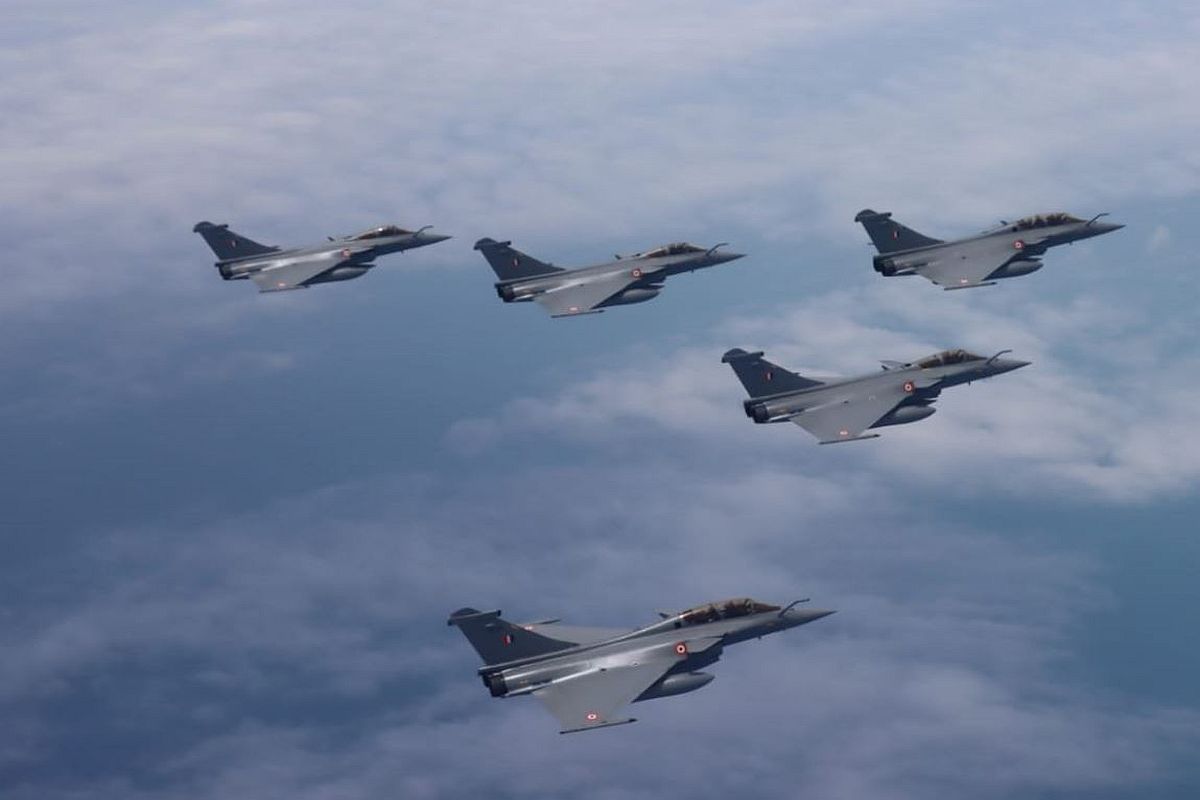The arrival of the first batch of five Rafale jets from France after years of acrimony and controversy is indeed a welcome development and will add strength to the fighting capabilities of the Indian Air Force, which is plagued by severe aircraft shortages. Considered one of the best fighter aircraft in the world, the Rafale is celebrated for its omni-role capabilities that allow it to take up several missions on a single flight.
Indian aviation experts rate it as a better fighter than the best that either Pakistan or China possess and point to its record in combat situations in Afghanistan, Mali, Libya and Iraq. But can five aircraft be the game changers that a former Air Force chief reckons they are, in the event of a conflict with China?
Advertisement
This projection appears to have been based on two factors – the advanced features of the Rafale fighter and the unreliability of equipment used by the adversary, especially Chinese-made equipment which experts point out are the outcome of reverse engineering Russian designs. Overlooked of course in this moment of triumph is the fact that a few swallows do not make a summer.
For, the Indian Air Force suffers from shortages of critical equipment in various areas. The IAF has far fewer squadrons (16-18 planes each) than the 42 it ought to have. Even the Rafale acquisition is a severely truncated one, the earlier negotiation for 126 aircraft having been scaled down to 36.
Many of the obsolete Mig fighters are due for retirement and the home-made Tejas remains illusory. It is a matter of record that just a couple of years ago, the Government was scouring international resale markets for junked Jaguars to cannibalise them for spares to use in the IAF’s primary deep penetration strike aircraft capable of delivering nuclear warheads.
Production lines in both Europe and Hindustan Aeronautics having shut down, the IAF faces a massive challenge in keeping its fleet of 80- odd Jaguars in the air. There are plans to phase the aircraft out in the next few years, just as France did in 2005 and Britain two years later. Aircraft acquisition takes time, even when the Prime Minister finds it possible to cut through the red tape of an elaborate system of defence purchases.
It was in 2015 that Mr Narendra Modi finalised the deal to acquire 36 Rafale jets on a visit to Paris; the fact that it has taken five years to get the first aircraft tells a tale. Thus, while welcoming the arrival of the five new aircraft, it is important for the government and the military establishment not to lose sight of the crippling equipment shortages that still dog the armed forces.
